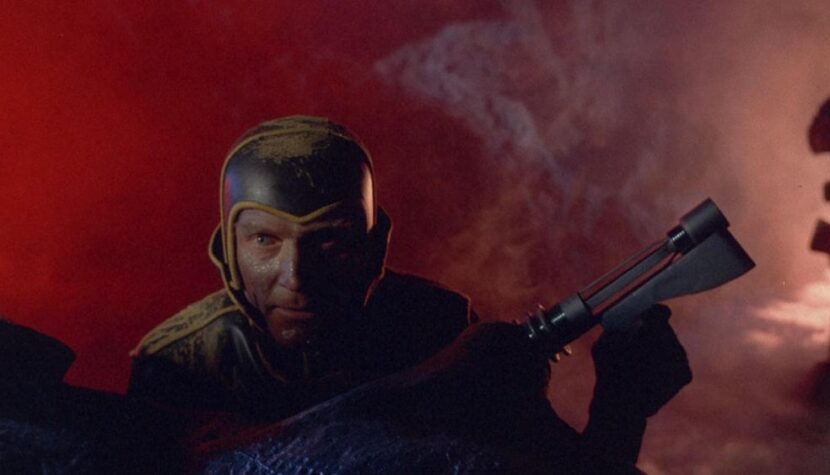PLANET OF THE VAMPIRES. Science fiction that preceded “Alien”

The Italian filmmaker Mario Bava is primarily known for horror films, but almost 60 years ago, he also made a science fiction film that turned out to be incredibly influential.
“Galliot and Argos” are two giant interstellar ships traversing space for research purposes. Astronauts on board receive a distress signal from the previously unexplored planet Aura and decide to identify its source. Argos lands safely despite a sudden and inexplicable outbreak of aggression among the crew members. However, Galliot malfunctions during landing and crashes. The mission, led by Captain Markary of Argos, overcomes the rocky surface of the hostile planet and discovers the wreckage of Galliot with dead crew members. Everything indicates that they did not die in the cruiser’s crash but killed each other; moreover, some bodies disappear without a trace. Further exploration of Aura reveals other extraordinary phenomena: dead astronauts seem to be resurrected by an unknown force, and in one corner of the planet lies the ruin of a spacecraft containing the enormous skeleton of an alien creature.

If the plot sounds familiar, it’s not surprising – the starting point of “Planet of the Vampires” is almost identical to two later films by Ridley Scott: “Alien” (1979) and “Prometheus” (2012). The similarities extend beyond the plot, including certain elements of the visual aspect, such as the alien skeleton in Bava’s film and the Engineer’s remains in Scott’s. Initially, both Scott and Dan O’Bannon (the writer of Alien) denied this influence, only for the latter to admit years later that he borrowed the image of the giant skeleton from “Planet of the Vampires.” Tobe Hooper (Lifeforce, 1985), Paul W.S. Anderson (Event Horizon, 1997), David Twohy (Pitch Black, 2000), Brian De Palma (Mission to Mars, 2000), John Carpenter (Ghosts of Mars, 2001), and the creators of Star Trek also drew from Bava’s production. This case is comparable to the influence of the Czechoslovakian film “Ikarie XB-1” (1963) by Jindřich Polák – a niche film that significantly influenced the better-known “2001: A Space Odyssey” by Stanley Kubrick.
Of course, Bava’s film did not emerge in a vacuum. The screenplay was based on Renato Pestriniero’s short story “One Night of 21 Hours,” and the story of bloodthirsty creatures taking control of humans had appeared on cinema screens many times before, such as in Don Siegel’s “Invasion of the Body Snatchers” (1956) and Edward L. Cahn’s “It! The Terror from Beyond Space” (1958). “Planet of the Vampires” came from the American International Pictures studio, for which Bava had previously directed “Black Sunday” (1960) and “The Whip and the Body” (1963). Due to a limited budget of only $200,000, the Italian director and his team had to rely on tricks involving miniature models, artificial fog, forced perspective, multiple exposures, and the Schüfftan effect (mirror reflections). According to Bava himself, the planet Aura was constructed from two (!) plastic rocks that stood in the Cinecittà studio as remnants from a previous film shot there.

All these imperfections are evident in the result, which is a typical B-movie production – the cinematic equivalent of a flashy cover of a pulp science fiction magazine from the 1950s and 60s. The interiors of the spacecraft are strikingly sterile, the set design gives the impression of poor decorations at an underfunded elementary school, and the script is based on a thin plot full of paper-thin characters devoid of psychology. Thus, it falls far short of the symbolism of “Alien,” which, beneath the surface of a monster movie, conveyed much deeper themes. “Planet of the Vampires” is a monster movie without a second layer, but perhaps it never aspired to be anything more. Today, Bava’s film – still impressive in formal terms, considering the minimal financial resources available to the creators – has primarily historical value as a source of inspiration for the later films mentioned above.

